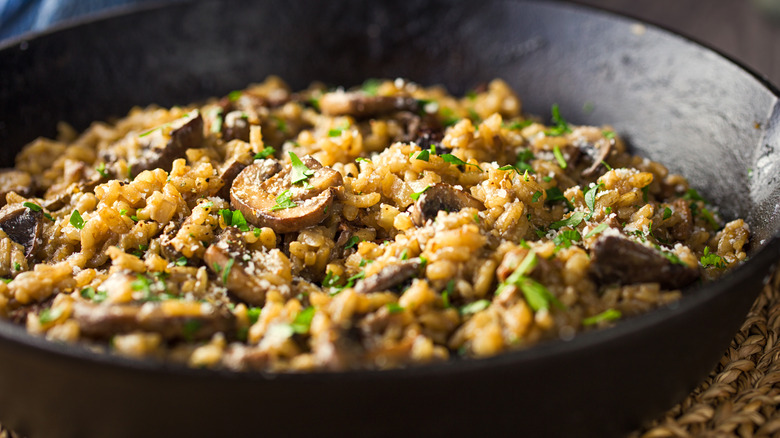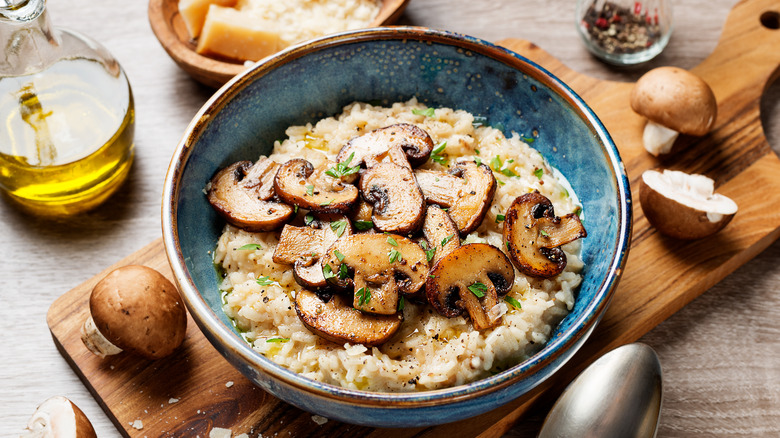What Not To Do When Your Risotto Sticks To The Pan
Smooth, creamy servings of risotto can be challenging to serve, as a host of mistakes ranging from choosing the wrong kind of rice to forgetting specific ingredients can destroy the perfect texture of a carefully planned and highly anticipated lobster risotto dinner. If you've become distracted in your kitchen or simply forgot to stir the risotto cooking on the stove, you may discover harder, denser pieces of rice sticking to the bottom of your skillet.
It may be tempting to stir even more furiously to make up for any culinary mishap, but doing so will mix in the harder rice, potentially ruining the texture of your dish. Instead, you may want to take the opposite approach in order to preserve the ultimate texture of your dish. This is not the time to try to make good use of mistakes. Instead, focus your attention on what is going well in your recipe and set out to preserve the soft rice kernels that are still cooking.
Focus on the good stuff
To do your best to circumnavigate sticky and unfortunate rice situations, add stock slowly to your risotto efforts and keep the heat of the stove on low. If you've noticed rice has hardened at the bottom of your skillet while you're cooking, leave the crustier rice pieces in place, and don't attempt to scrape the bottom of the pan or mix these denser pieces in with the softer kernels.
As delicious as risotto can be, the rich rice dish can be a finicky recipe to master. Aim to stir ingredients until smooth and concentrate on the texture of your meal. It's important to not overcook the dish. Mixing risotto is notoriously a laborious task for chefs, but that first bite of Parmesan risotto will make your efforts worth it.
You may have a bit more work to clean up skillets after cooking. To remove burnt or stuck rice from your pan, you can try mixing vinegar and water in a 50/50 ratio. Your satisfyingly creamy risotto meal will keep you fueled as you work on scrubbing dirty and used dishes.

